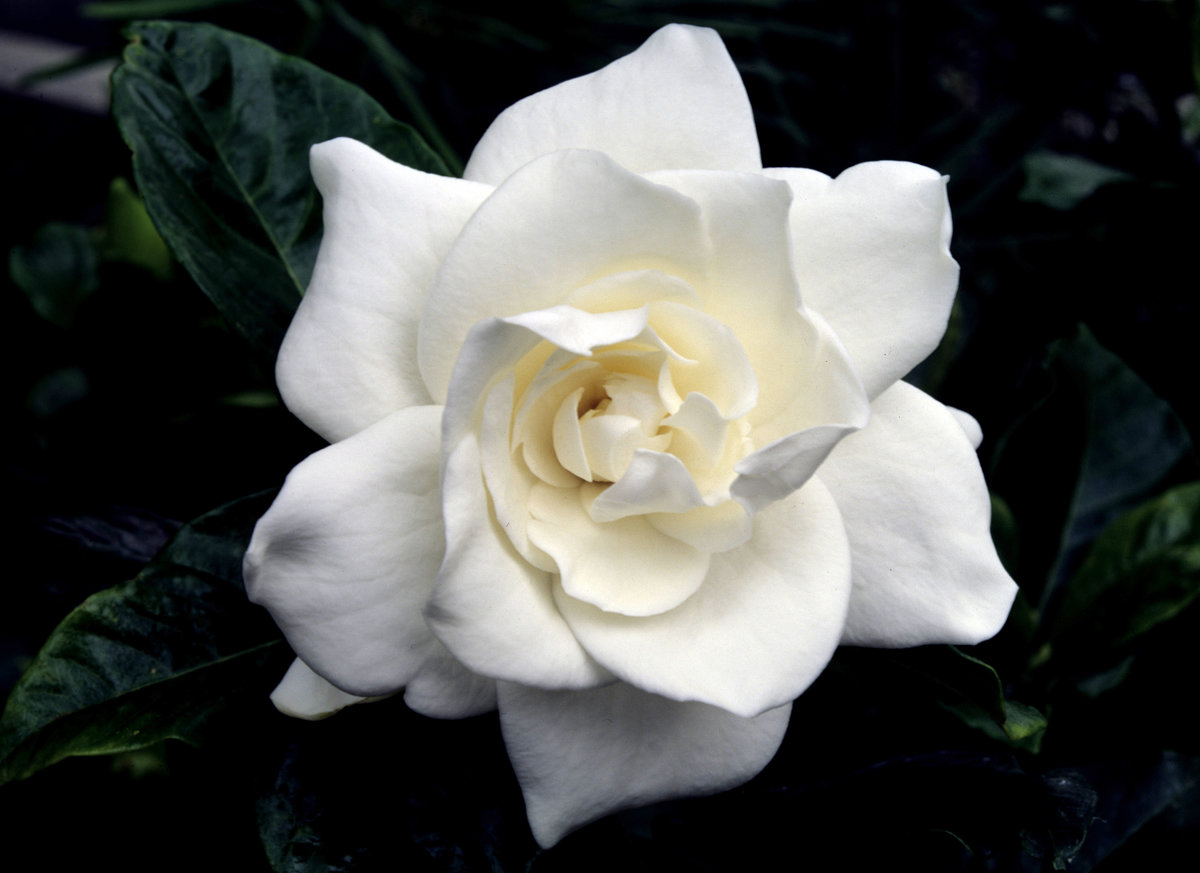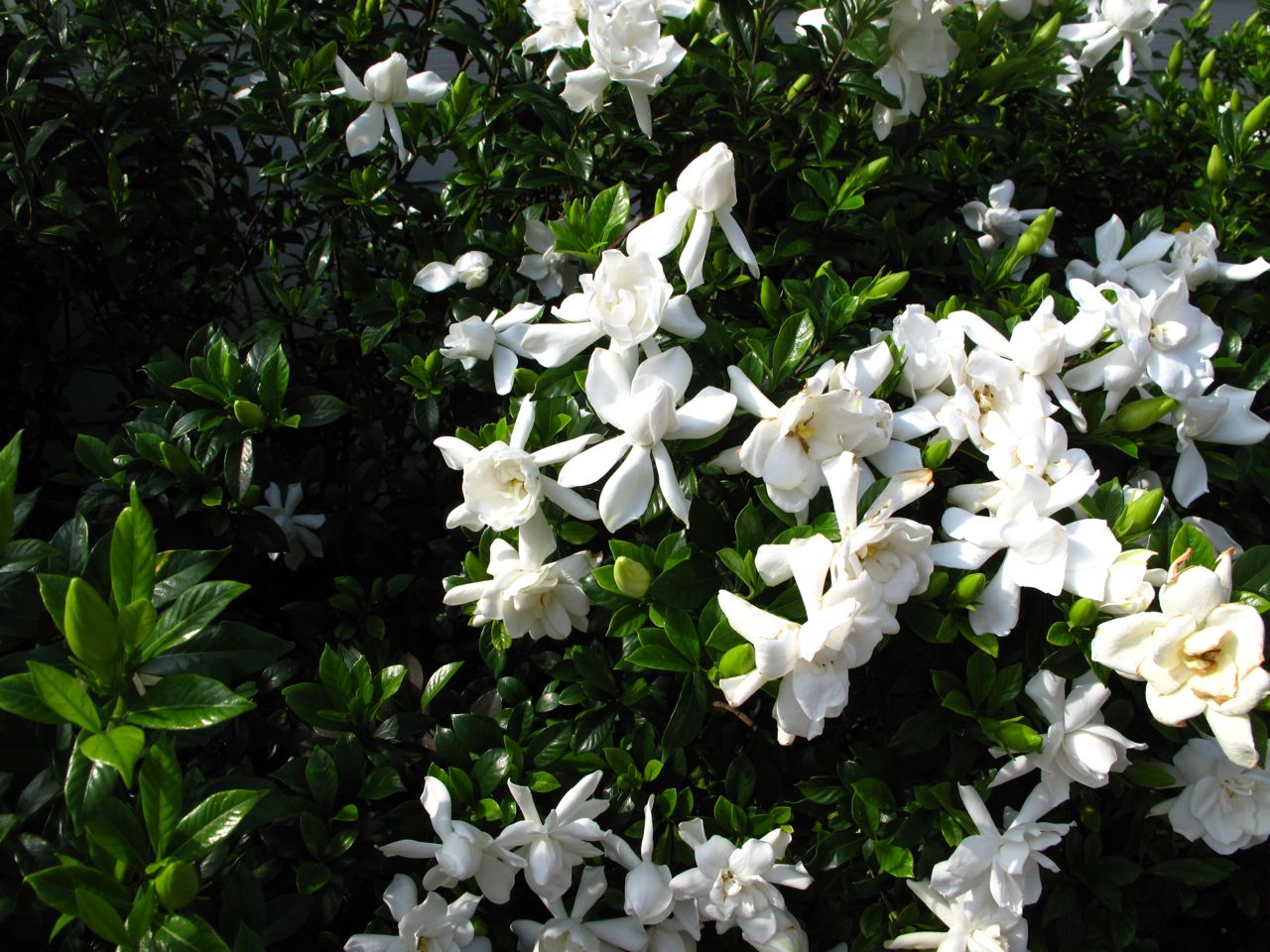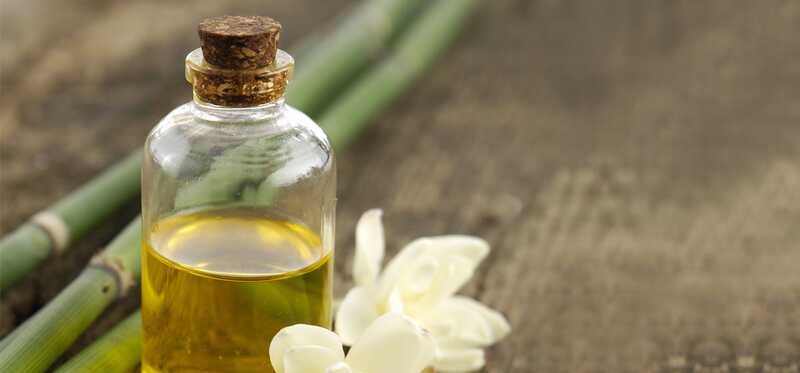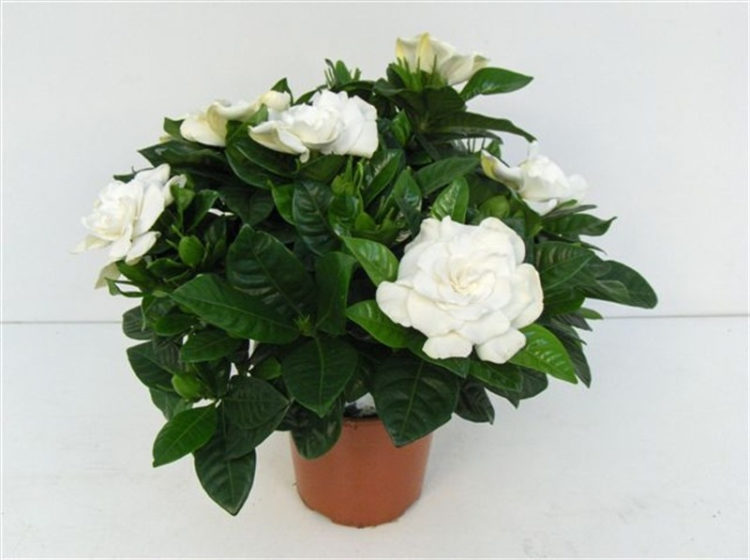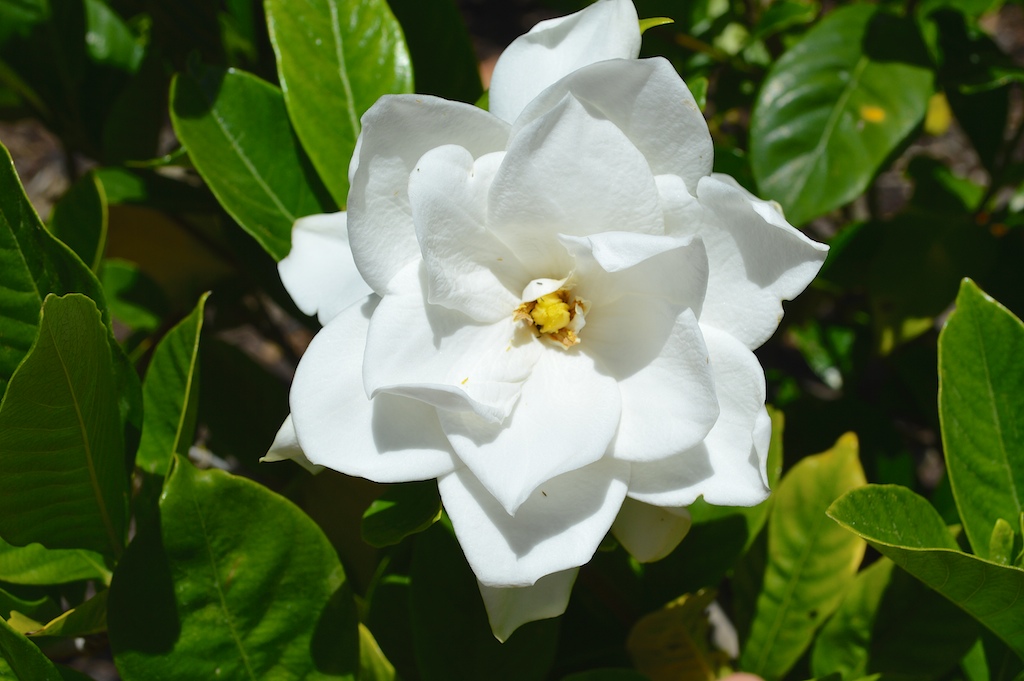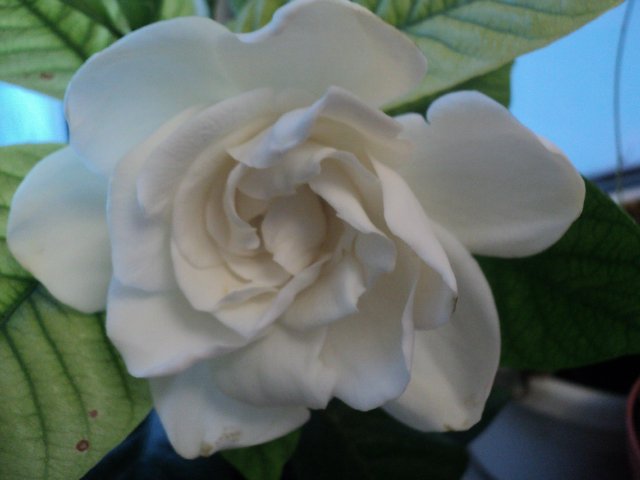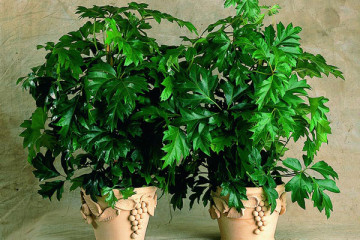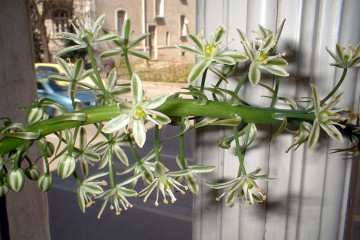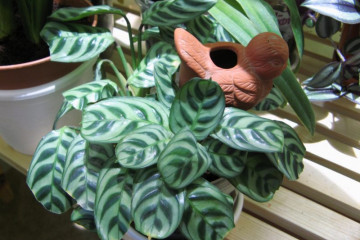Gardenia in bloom - what a house and outdoor plant looks like
Content:
Gardenia is a tropical flower and is a bit moody when grown in a room environment. Its most popular variety is jasmine gardenia, it is quite easy to grow it at home. This article explains what a gardenia flower is, how to grow and care for it.
Gardenia in bloom
For a plant to bloom, you need to provide it with good care. Since the flower loves moisture, it is often necessary to spray it with water, but the main thing is that the buds themselves do not get a lot of water, otherwise they will wither. Several times a month, when watering, add a spoonful of lemon juice to the water. Gardenia requires a mixture of coniferous soil, turf, peat and river sand.
Description of gardenia bloom
To understand what a gardenia looks like, you can look at the flowers of peonies. These varieties are very similar. Basically, the plant lives in subtropical areas. The flower is named after the popular botanist, Alexander Garden, who discovered it.
Under natural conditions, a gardenia bush can grow up to 2 m.In a home environment, the plant reaches no higher than 50 cm in height, however, with the help of new breeding species, larger bushes up to 110 cm can be seen.
All varieties of this plant belong to evergreen crops, although there may be deciduous ones. Inflorescences of pastel shades of pink, beige, white are one-color. The arrangement of flowers is in the axils of the leaves or at the top of the stem. The leaves of the plant are leathery, grow in pairs, marsh-green in color. The crown has a narrow shape. The peculiarity of the plant is that it blooms for six months.
Many organs are easily treated with flowers and roots of the plant: lungs, liver, kidneys, heart. Skin problems and infections, mastitis and dysentery can be treated. The fruits play the role of anti-inflammatory, choleretic, antiseptic action. The flower has many healing functions.
How white gardenia blooms
From the beginning of summer to autumn, beautiful large flowers are formed on the bushes. They are found in the axils of the lower leaves, and sometimes at the crown of the branches. Flowers grow singly or in groups of 5-6 buds.
The diameter of one is about 5-7 cm. It can be simple, semi-double or double. Coloring is mainly light colors in any type of plant. They smell very nice during flowering. The scent is reminiscent of a strong hint of citrus and jasmine. There are 5-9 stamens in the center of the bud.
After pollination, large pear-shaped or round fruits are formed. There are many small seeds inside them. When ripe, the fruit cracks.
The plant needs a great spot of light, but it also needs shade from the hot summer sun. If the sun's rays hit the flower, then its leaves and buds may fall off. After purchasing a plant, you must immediately choose a good location for it.
In cold weather, additional lighting is needed, otherwise the winter varieties will not bloom. During cold weather, it is advisable to move the pots with flowers to the southern part of the room so that they receive good lighting. It is recommended to make the backlight using fluorescent lamps.
The plant will feel great if allowed to be outdoors during the summer. But it is necessary to ensure that the sharp rays of the sun do not fall on it, and sharp hypothermia of the bush or strong drafts must not be allowed. This will lead to the rapid death of the flower.
Types of gardenias
Flowers can be designed for indoor and outdoor use. In shades, all varieties and species are similar: they range from light white to pale beige.
Indoor flower gardenia
Houseplants, mostly of a dwarf form, usually thrive indoors. All they need is moisture and plenty of light.
Before purchasing a plant, it is recommended to carry out a complete inspection of it. It is better to buy bushes with a well-developed, branched form in all directions. If the flower initially looks sick, it has light, yellow or sluggish leaves - no need to rush to buy. A sluggish gardenia with crumbling petals will not bring pleasure.
A healthy flower looks gorgeous and at the same time is quite expensive, but you do not need to save money by purchasing a diseased plant, albeit at a huge discount. A fresh plant with good care will delight its owner for a very long time.
It is immediately recommended to purchase the entire set of necessary dressings and fertilizers, as well as a comfortable, spacious pot or pots. Roots need a lot of space to grow quickly.
Gardenia Jasmine
A gorgeous gardenia flower from the genus Jasmine, when grown indoors, it looks like a small bush 50-55 cm in height. Wild varieties growing in the forests of Japan, Asia and India grow to about 190 centimeters. In China, they love this plant so much that they released a drama series called Gardenia in Bloom.
Gardenia Jasmine Fortune
This type of plant has double flowers, they look like a camellia, the size reaches 12 cm.
They are sometimes referred to as Fortuneana. Has a fairly bright scent similar to perfume. Many French brands use this particular variety in the production of perfumes.
Gardenia Jasmine First Love
This species is distinguished by large flowers, up to about 15 cm in diameter. The petals are double, their color is light cream. They smell very strong. Flowering begins in spring and continues throughout the summer. Basically, the variety blooms twice a year.
Gardenia Jasmine Variegata
Variegated appearance with small-sized fragrant flowers (9 cm). This small, slow-growing shrub is great for planting in planters. The leaves are round, light green in color, sometimes with brown blotches.
Gardenia Vietnamese
Very fast growing, evergreen, multi-stemmed bushes with small shoots up to half a meter high. Leaves are oval, marsh green, whole-edged. The flowers are cream-colored, solitary, with narrow, long leaves, have a sweet aroma that intensifies in the evening and at night.
Gardenia Citriodora
A large shrub of this plant has very branched shoots with round shiny leaves. It blooms with a large number of small, no more than 3 cm in diameter, snowy double flowers. Gardenia also boasts a strong and vibrant scent.
Gardenia street
These species are usually grown in gardens and courtyards. They need a lot of free space and sunlight.
Gardenia Regal
This is a rather rare variety with an amazingly shaped creamy beige inflorescences. It is sometimes grown as a houseplant. It can also be planted in open soil, but in case of frost, it must be brought indoors.
Gardenia Ternifolia
The plant is popular with flower growers due to its intertwining branches. Large fragrant white flowers grow on them. The species is decorative and resistant to chlorosis. It grows mainly in Thailand.
Diseases and problems in growing
All of these plant varieties are very susceptible to aphid and spider mite disease. To check if there are pests on the leaves, you need to examine them carefully with a magnifying glass.
When growing, some problems may arise:
- The flower grows very slowly, there are no buds, and the leaves are very light - little light or lack of nutrients and minerals.
- Yellow spots form on the leaves - you need to acidify the soil.
- The buds wither and crumble, the leaves deteriorate, and the flower itself fades away - perhaps the temperature is too low.
- Yellow and brown blotches appear on the leaves - a lack of water in the ground or watering occurs with water that is not warm, as needed, but cold. It can also be due to strong drafts.
- Falling flowers - the humidity of the air is very low, or the flower was constantly rearranged, which caused stress on it.
The indoor gardenia flower is very popular with gardeners. It does not require particularly difficult care, but it amazes with its beauty and floral aroma. If you adhere to all the rules for growing and caring, then the plant will live for many years. Gardenias can be planted in pots with a variety of other bushy plants to create scenic compositions.
